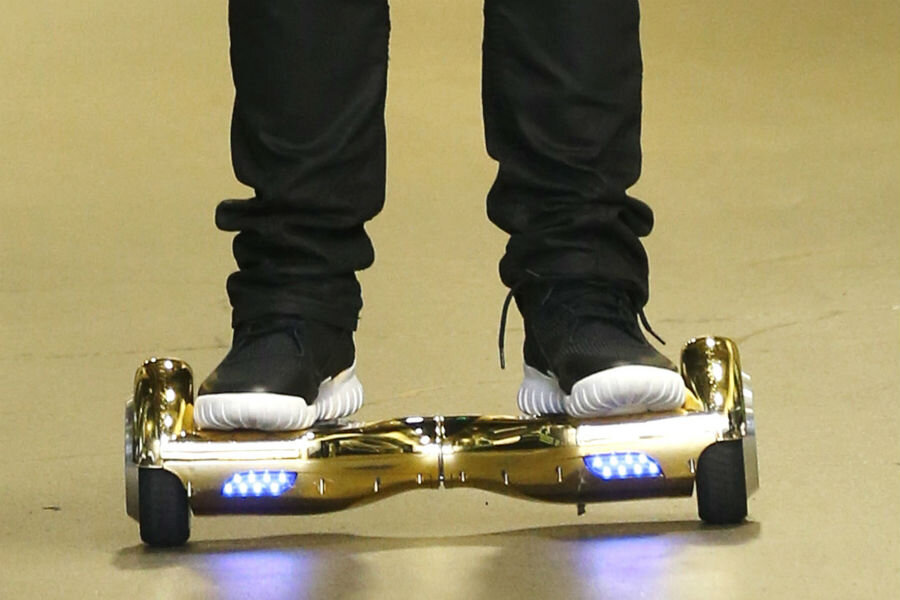Are hoverboards fire hazards?
Loading...
The hot toy of the Christmas season is proving too hot for Amazon, Overstock, and even some airlines.
Hoverboards, those self-balancing boards on two wheels that don’t, in fact, hover, have been pulled from the two online retailers, and banned from wheeling onto major airlines in the United States, following numerous fires caused by the futuristic toy.
There have been reports of 10 fires in 9 US states in recent months, and The US Consumer Product Safety Commission (CPSC) has opened an investigation. The issue extends to Hong Kong and London, with house fires in those cities as well as in Alabama, Louisiana, and Florida, after the boards caught flame while charging in the last few months, according to Quartz.
The issue appears to be at least threefold: the rechargeable lithium ion battery that powers the board are prone to fire when damaged; there is minimal oversight for this particular product in China, where the bulk of the boards are manufactured and shipped to consumers around the world; and there are no safety regulations in place in the US.
Jay Whitacre, professor of materials science & engineering at Carnegie Mellon University, says in an interview with Wired that the problem does not exist with the hoverboards themselves, but with the cheap quality of the batteries, which are being mass produced at low prices to satisfy the enormous demand for a low-cost alternative to a $1000 Segway.
“There are a lot of factories in China that now make Li-ion batteries, and the reality is that the quality and consistency of these batteries is typically not as good as what is found in top tier producers such as LG or Samsung,” Whitacre says. “These are known as ‘low cost li-ion batteries’ by most in the industry – they are not knockoffs or copies, but are instead just mass-manufactured cells.”
Such batteries can be more prone to short-circuiting if poorly put together, but it is the usual wear and tear expected from a board on wheels that can damage the batteries, too, and that in itself, Mr. Whitacre says, can cause fires.
Quartz reports that millions of hoverboards have been shipped out of China in 2015, with 400,000 shipped from Shenzhen, a "cheap tech manufacturing hub," alone.
Spurring the hoverboard manufacturing glut, according to Quartz, is a three-way patent dispute over the product’s intellectual property, which has made the self-balancing board market a veritable "free-for-all" with hundreds of entrepreneurs and US importers making deals with white-label manufacturers in China to make hoverboards, which are then resold using names like Phunkeeduck, Swagway, Fiturbo, Hover Booster, Galaxy Board, and Cyboard.
Compounding the obvious issue of flammability is no regulation on the books in the US to promote or ensure safety.
“This is a new product we’re talking about today,” Scott Wolfson, the communications director of CPCS, the federal agency leading a probe into the product, tells Gizmodo in an interview. “There’s no safety standard in place.”







